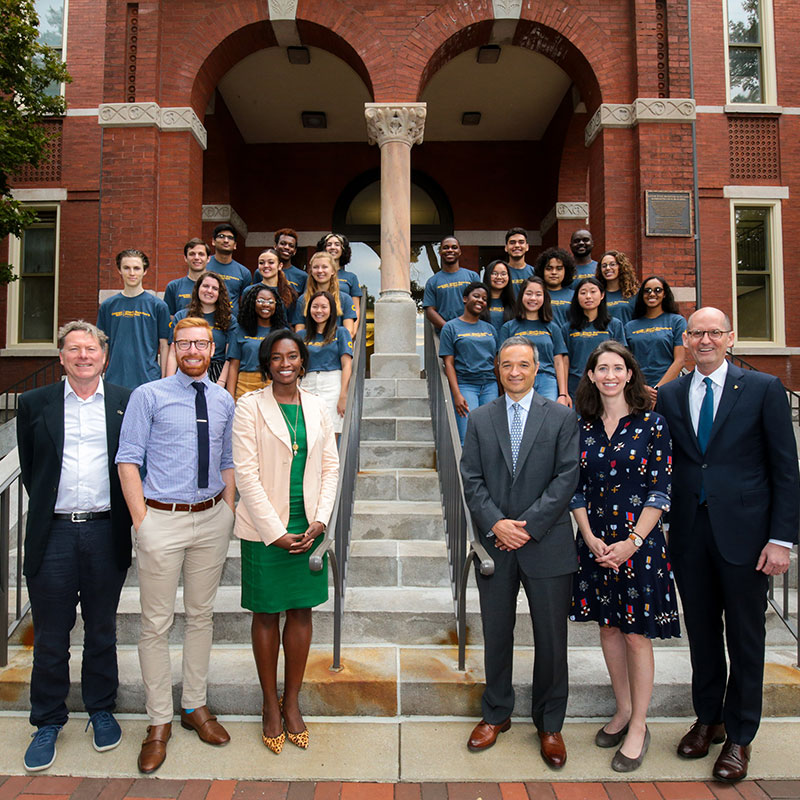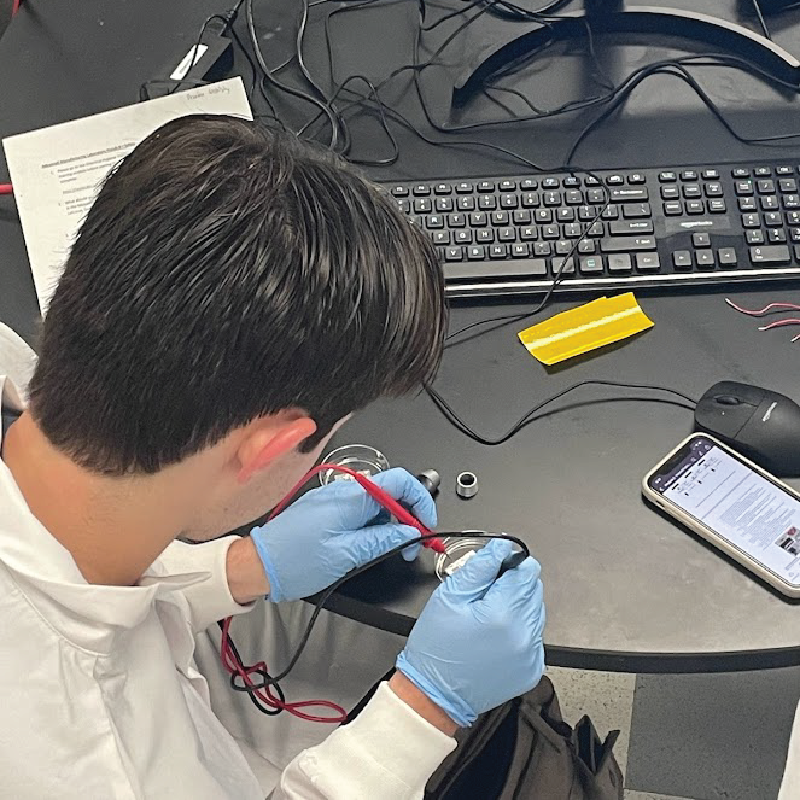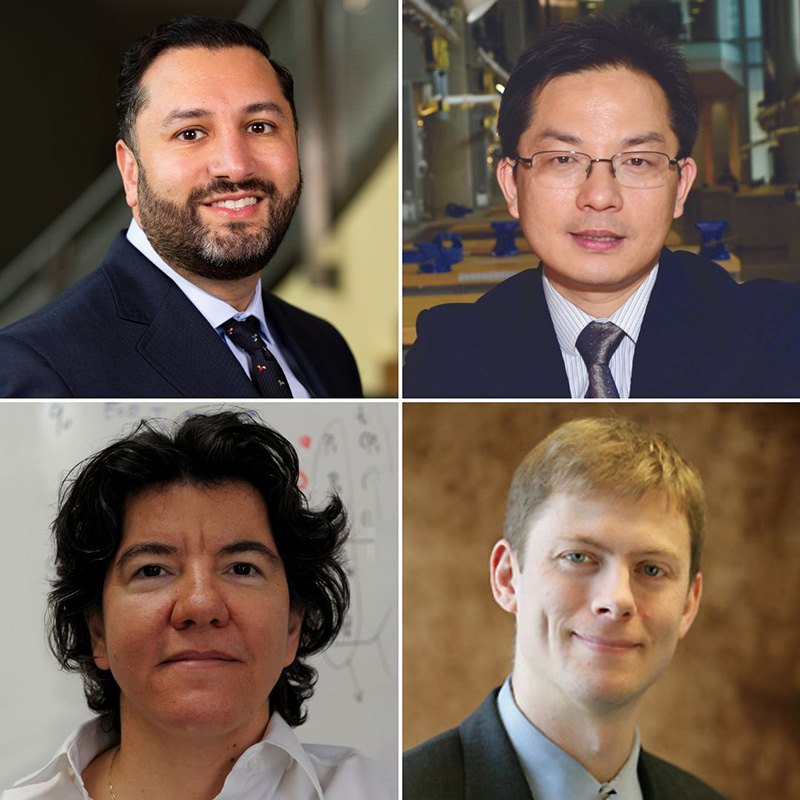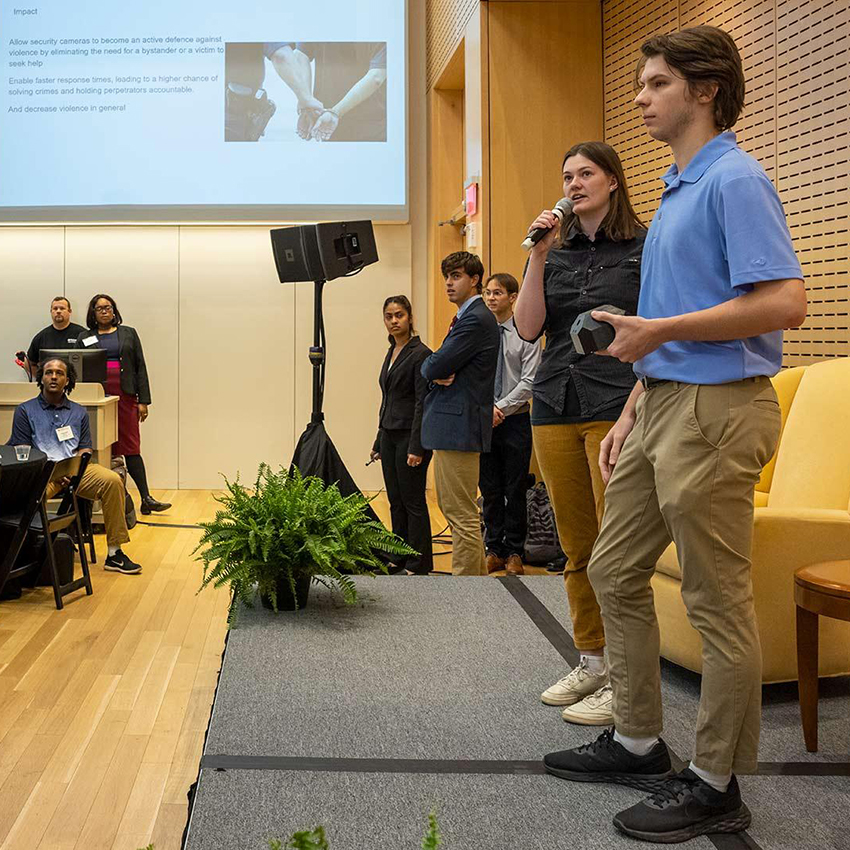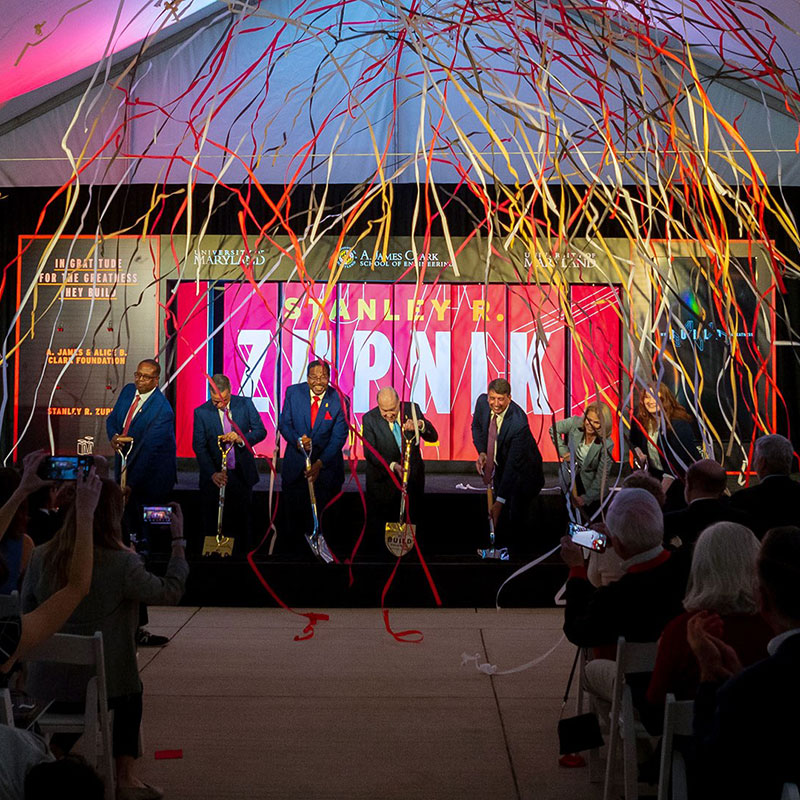New UMD Synthesis Method May Shape Future of Nanostructures, Clean Energy
September 2, 2014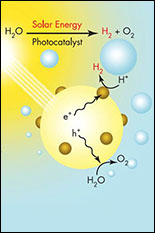
September 2, 2014
COLLEGE PARK, Md. -- A team of UMD physicists has published new nanoscience advances that they and other scientists say make possible new nanostructures and nanotechnologies with huge potential applications ranging from clean energy and quantum computing advances to new sensor development.
Published in the September 2 issue ofNature Communications, the Maryland scientists' primary discovery is a fundamentally new synthesis strategy for hybrid nanostructures that uses a connector, or "intermedium," nanoparticle to join multiple different nanoparticles into nanostructures that would be very difficult or perhaps even impossible to make with existing methods.
The resultant mix and match modular component approach avoids the limitations in material choice and nanostructure size, shape and symmetry that are inherent in the crystalline growth (epitaxial) synthesis approaches currently used to build nanostructures.
"Our approach makes it possible to design and build higher order [more complex and materially varied] nanostructures with a specifically designed symmetry or shape, akin to the body’s ability to make different protein oligomers each with a specific function determined by its specific composition and shape," said team leader Min Ouyang, an associate professor in the department of physics and the Maryland NanoCenter.
"Such a synthesis method is the dream of many scientists in our field and we expect researchers now will use our approach to fabricate a full class of new nanoscale hybrid structures," he said.
Among the scientists excited about this new method is the University of Delaware’s Matt Doty, an associate professor of materials science and engineering, physics, and electrical and computer engineering and associate director of the UD Nanofabrication Facility. “The work of Weng and coauthors provides a powerful new tool for the ‘quantum engineering’ of complex nanostructures designed to implement novel electronic and optoelectronic functions. [Their] new approach makes it feasible for researchers to realize much more sophisticated nanostructure designs than were previously possible.” he says.
Lighting a Way to Efficient Clean Power Generation
The team's second discovery may allow full realization of a light-generated nanoparticle effect first used by ancient Romans to create glass that changes color based on light. This effect, known as surface plasmon resonance, involves the generation of high-energy electrons using light.
More accurately, said Ouyang, plasmon resonance is the generation of a collective oscillation of low energy electrons by light. And the light energy stored in such a “plasmonic oscillator” then can be converted to energetic carriers (i.e., “hot” electrons) for use in various applications”.
In recent years, many scientists have been trying to apply this effect to the creation of more efficient photocatalysts for use in the production of clean energy. Photocatalysts are substances that use light to boost chemical reactions. Chlorophyll is a natural photocatalyst used by plants.
"The ingenious nano-assemblies that Ouyang and his collaborators have fabricated, which include the novel feature of a silver-gold particle that super-efficiently harvests light, bring us a giant step nearer the so-far elusive goal of artificial photosynthesis: using sunlight to transform water and carbon dioxide into fuels and valuable chemicals," said Professor Martin Moskovits of the University of California at Santa Barbara, a recognized expert in this area of research and not affiliated with the paper.
Indeed, using sunlight to split water molecules into hydrogen and oxygen to produce hydrogen fuel has long been a clean energy "holy grail". However, decades of research advances have not yielded photocatalytic methods with sufficient energy efficiency to be cost effective for use in large scale water splitting applications.
"Using our new modular synthesis strategy, our UMD team created an optimally designed, plasmon-mediated photocatalytic nanostructure that is an almost 15 times more efficient than conventional photocatalysts," said Ouyang. In studying this new photocatalyst, the scientists identified a previously unknown "hot plasmon electron-driven photocatalysis mechanism with an identified electron transfer pathway."
It is this new mechanism that makes possible the high efficiency of the UMD team’s new photocatalyst. And it is a finding made possible by the precise materials control allowed by the team’s new general synthesis method.
Their findings hold great promise for future advances that could make water splitting cost effective for large-scale use in creating hydrogen fuel. Such a system would allow light energy from large solar energy farms to be stored as chemical energy in the form of clean hydrogen fuel. And the UMD team’s newly-discovered mechanism for creating hot (high energy) electrons should also be applicable to research involving other photo-excitation processes, according to Ouyang and his colleagues.
Support for this research was provided by the Office of Naval Research, the U.S. Department of Energy, the National Science Foundation, and the Research Corporation for Science Advancement.
Hierarchical synthesis of non-centrosymmetric hybrid nanostructures and enabled plasmon-driven photocatalysis
Nature Communications
Lin Weng, HuiZhang, Alexander O. Govorov and Min Ouyang


